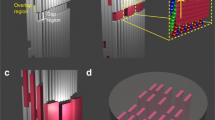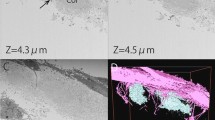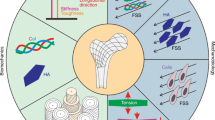Abstract
IN a recent communication1, Jackson and Randall have shown, using electron microscopy and electron diffraction, that at a very early stage in the development of bone, apatite crystals are deposited in what appears to be a definite relationship to the collagen fibres. They did not, however, find any evidence of preferred orientation of the crystals. The samples examined by Jackson and Randall were of embryonic avian bone, and the absence of preferred orientation in such young bones is in accord with results we have obtained with X-ray diffraction.
This is a preview of subscription content, access via your institution
Access options
Subscribe to this journal
Receive 51 print issues and online access
$199.00 per year
only $3.90 per issue
Buy this article
- Purchase on Springer Link
- Instant access to full article PDF
Prices may be subject to local taxes which are calculated during checkout
Similar content being viewed by others
References
Jackson, S. F., and Randall, J. T., Nature, 178, 798 (1956).
Clark, S. M., and Iball, J., “Progress in Biophysics” (in the press).
Author information
Authors and Affiliations
Rights and permissions
About this article
Cite this article
CLARK, S., IBALL, J. Structure of Bone in Relation to Growth. Nature 179, 94–95 (1957). https://doi.org/10.1038/179094b0
Issue Date:
DOI: https://doi.org/10.1038/179094b0
This article is cited by
-
Age-related changes in the tensile creep properties of human compact bone tissue
Mechanics of Composite Materials (1982)
-
Change in the mechanical properties of human compact bone tissue upon aging
Polymer Mechanics (1976)
-
Changes in the Ultra-structure of Human Fœtal Bone during Growth
Nature (1957)
Comments
By submitting a comment you agree to abide by our Terms and Community Guidelines. If you find something abusive or that does not comply with our terms or guidelines please flag it as inappropriate.



